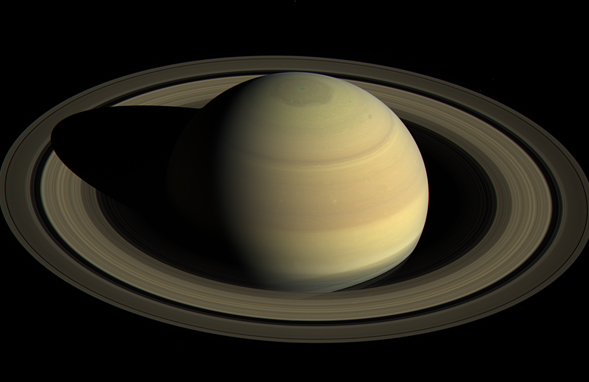Earth’s life, Jupiter’s red storm, Neptune’s blue, and Saturn’s rings are few of the spectacularly unbelievable features that make up our solar system. According to recent findings, however, Saturn may lose its glorious rings sooner than scientists had presumed. The solar system is expected to suffer the loss of its biggest and brightest planetary rings.
While Saturn itself is massive enough to fit over seven hundred Earth-size planets, its rings extend 280,000 km from the planet. The rings are so magnificently wide that they could fit six Earth-size planets in a row. With the largest and brightest ring system, Saturn is easily recognizable, standing out in the solar system. This appearance, however, is likely to disappear soon enough. Despite appearing as smooth wide structures in space, Saturn’s rings are made up of particles, suspended quite close to each other. As for the size of the particles, it ranges from anything between huge rocks to mountain-like structures.
Saturn’s rings are further made up of the water ice particles that reflect light, making Saturn’s ring system so bright. These water ice particles, however, have been raining over the gas giant with no solid surface more rapidly than expected. Reportedly, the current rate is at 10,000 kilograms of ring rain per second. The rain is essentially disintegration of the ring particles, which are constantly exposed to ultraviolet rays of the sun and clashes with tiny meteoroids floating in space. The regular collisions lead to the vapourisation of the water ice particles, which then turn into water molecules that interact with Saturn’s magnetic field. This results in their fall in the planet’s direction, eventually, burning up in Saturn’s atmosphere.
The ring rain, however, is not a recent finding. In 1980, the NASA Voyager discovered dark bands close to Saturn’s surface, which was later revealed to be ring rain. In 2004, NASA, the Italian Space Agency, and the European Space Agency collaborated on the Cassini–Huygens mission, which sent a probe to study Saturn, its rings, and its natural satellites. Before its demise into the planet in 2017, the Cassini space probe revealed the amount of ring rain falling on Saturn. The ring-dust raining on the planet was much greater than previously imagined.
The revelation led to the emergence of new scientific calculations, suggesting that the rings of the over four-billion-year-old planet may only be hundred to two hundred million years old. This implies that Saturn once existed without its rings, maybe even as recent as the Jurassic era on planet Earth. Moreover, scientific calculations suggest that it might not be long before the planet becomes ring-less once again, possibly, in the next hundred million years.









